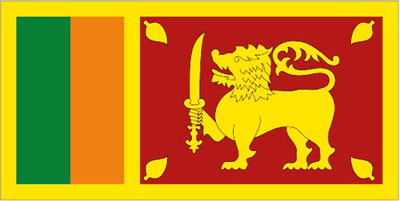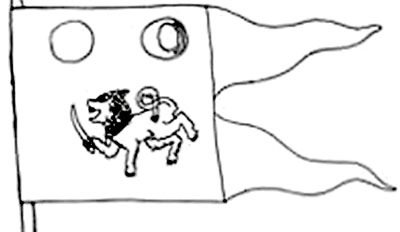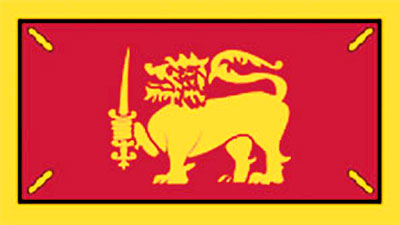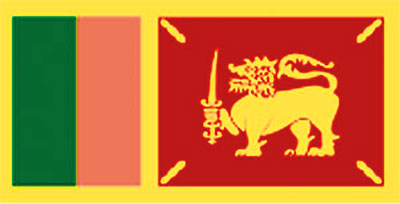The Sri Lankan National Flag
View(s):When Vijaya, the first King of the island of Sri Lanka, arrived in Sri Lanka from India in 486 BC, he brought with him a flag with a symbol of a lion on it. Since then the Lion symbol played a significant role in the history of Sri Lanka.

The Flag as of today – pinnacles replaced by Bo leaves
It was used extensively by monarchs who followed King Vijaya and it became a symbol of freedom and hope. When the legendary King Dutugemunu embarked on the campaign in which he defeated the Tamil King Elara, who had occupied part of Sri Lanka, he carried with him a banner which portrayed a lion carrying a sword on his right forepaw along with two other symbols, the Sun and the Moon.
The banner was in use until 1815, when the reign of the last king of the Kandyan Kingdom, King Sri Vikrama Rajasinha, was brought to an end with the Kandyan nobility’s signing of the Kandyan Convention on March 2, proclaiming King George III as King of Ceylon and replacing the Lion Flag with the Union Flag as the national flag of Ceylon.
The government of British Ceylon used its own flag. The Lion Flag was taken to England and kept at the Royal Hospital Chelsea. As the years passed, the design of the flag was forgotten by the Sri Lankan public.

The Flag as of today – pinnacles replaced by Bo leaves
Then, as the independence movement in Sri Lanka gained strength in the early 20th century, E. W. Perera, a prominent figure of the independence movement with the help of D. R. Wijewardene, owner of the Sinhala newspaper ‘Dinamina’ discovered the original
Lion Flag kept at the Royal Hospital, Chelsea, UK.
A picture of it was subsequently published in a special edition of the Dinamina newspaper to mark 100 years since the end of Sri Lankan independence. The Lion Flag then became a centrepiece of attraction to the public, who for the first time since the fall of the Kandyan Kingdom were now aware of its actual design.
The first Prime Minister of independent Ceylon Hon. D. S. Senanayake, hoisted the Lion Flag at the ceremony on February 4, 1948. This flag depicted a yellow lion holding a sword in the right hand, facing the hoist, on a dark red background, with a yellow border, with four pinnacles of a Buddhist dagaba in the four corners.

Flag of the Kandyan Kingdom (1469 – 1815)
The National Flag Committee was formed in March 1948 and on March 2, 1951, the Lion Flag was accepted, with a few changes as the country’s National Flag. Two vertical bands, one green and the other orange, were included in the flag to represent the Muslim and Tamil communities respectively.
Finally in 1972, when the country adopted the local name of Sri Lanka, the flag was modified once more, with four stylized leaves of the Bo (Pipul) tree, a Buddhist symbol, added to the four corners to replace the four pinnacles. In 1978, the leaves were made more natural.
Symbolism of the Lion Flag
The lion: The Sinhalese ethnicity and the strength of the nation
The Bo leaves: Buddhism and its influence on the nation.
They also stand for the four virtues of Kindness
(Mettha), Compassion (Karuna), Equanimity
(Upeksha) and (Muditha) Happiness
Sword: The sovereignty of the nation
Vertical Orange stripe: The Tamil community
Vertical green stripe: The Muslim community
Yellow border: People from other cultures living in Sri Lanka

Bands of green and orange added in 1951


